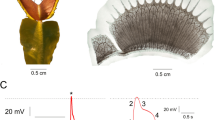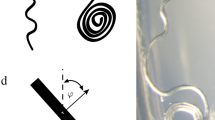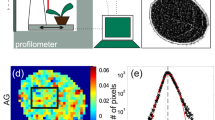Abstract
THE electric fields primarily developed across the walls of plant cells give rise to an integrated field associated with a growing plant organ. Information from the literature with regard to such electric fields associated with plant organs is contradictory and has led to conflicting theories; and the conflict in experimental evidence has never been satisfactorily resolved. An investigation of the literature seems to us to show that artefacts developed at points where measuring probes make contact with the plant would, in most cases, swamp the normal field which it is desired to investigate.
This is a preview of subscription content, access via your institution
Access options
Subscribe to this journal
Receive 51 print issues and online access
$199.00 per year
only $3.90 per issue
Buy this article
- Purchase on Springer Link
- Instant access to full article PDF
Prices may be subject to local taxes which are calculated during checkout
Similar content being viewed by others
Author information
Authors and Affiliations
Rights and permissions
About this article
Cite this article
McAULAY, A., SCOTT, B. A New Approach to the Study of Electric Fields produced by Growing Roots. Nature 174, 924–925 (1954). https://doi.org/10.1038/174924a0
Issue Date:
DOI: https://doi.org/10.1038/174924a0
This article is cited by
Comments
By submitting a comment you agree to abide by our Terms and Community Guidelines. If you find something abusive or that does not comply with our terms or guidelines please flag it as inappropriate.



